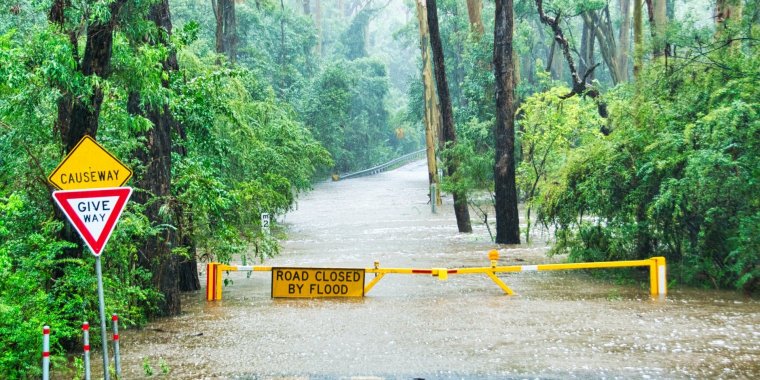| News / Science News |
Scientists discover uncertainties in flood risk estimates
Flood frequency analysis is a technique used to estimate flood risk, providing statistics such as "100-year flood" and "500-year flood" forecasts that are critical to infrastructure design, dam safety analysis and flood mapping in flood-prone areas. But the method used to calculate these flood frequencies is due for an update, according to a new study by scientists at the Desert Research Institute, University of Wisconsin-Madison and Colorado State University.

Scientists discover uncertainties in flood risk estimates. Photo: Phillip Flores/Unsplash
Floods, even in a single watershed, are known to be caused by a variety of sources, including rainfall, snowmelt or "rain-on-snow" events in which rain falls on existing snowpack.
However, flood frequencies have traditionally been estimated under the assumption that these flood "drivers," or root causes, were unimportant.
In this research, a team led by Guo Yu of the Desert Research Institute examined the most common drivers -- rainfall, snowmelt, and rain-on-snow events – of historic floods for 308 watersheds in the Western U.S. and investigated the impact of different flood types on the resulting flood frequencies.
“This study shows that rainfall and rain-on-snow events have greater potential to cause rare but very large floods than current 100-year flood frequency forecasts predict,” said Laura Lautz, a program director in NSF’s Division of Earth Sciences.
“As we’ve been seeing in Yellowstone, where heavy rains and snowmelt are driving floods far larger than any observed in the historical record, these events can cause widespread damage and devastation.”
The findings showed that 64% of the watersheds frequently experienced two or three flood types throughout the study period and that rainfall-driven floods, including rain-on-snow, tended to be substantially larger than snowmelt floods across watershed sizes.
Further analysis showed that by neglecting the unique roles of each flood type, conventional methods for generating flood frequency estimates tended to result in underestimation of flood frequency at more than half of the sites, especially at the 100-year flood level and beyond.
"In practice, the role of different mechanisms has often been ignored in deriving the flood frequencies," said Yu. "We showed that neglecting such information can result in uncertainties in estimated flood frequencies which are critical for infrastructure."
The findings have important implications for estimating flood frequencies into the future, as climate change pushes conditions in snowmelt-dominated watersheds toward increased rainfall.
"How the 100-year flood will evolve due to climate change is one of the most important unanswered questions in water resources management," said Daniel Wright at the University of Wisconsin-Madison.
"We need to focus on the fundamental science of how the water cycle, including extreme rainstorms and snow dynamics, are and will continue to change in a warming climate."
The team hopes that this research is useful to engineers, who rely on accurate estimates of flood frequencies when building bridges and other infrastructure. (U.S. National Science Foundation)
YOU MAY ALSO LIKE





